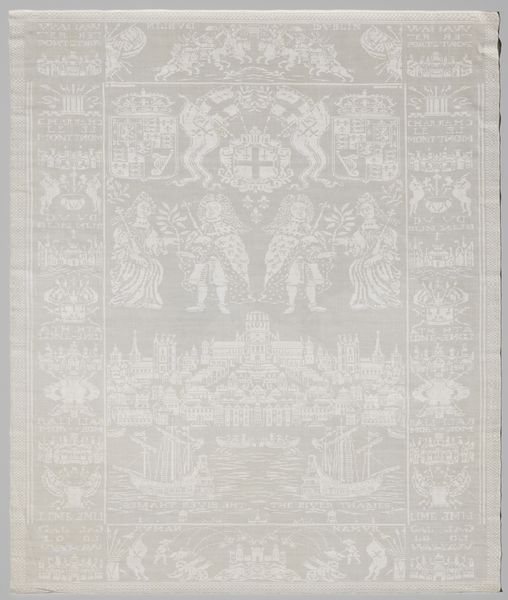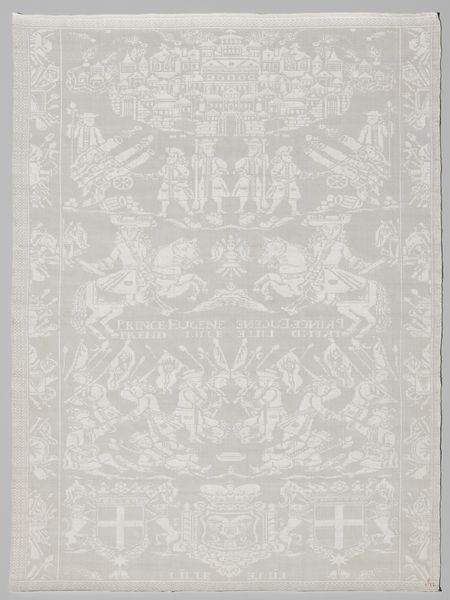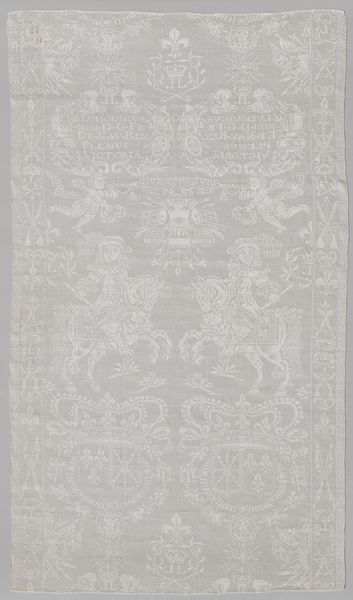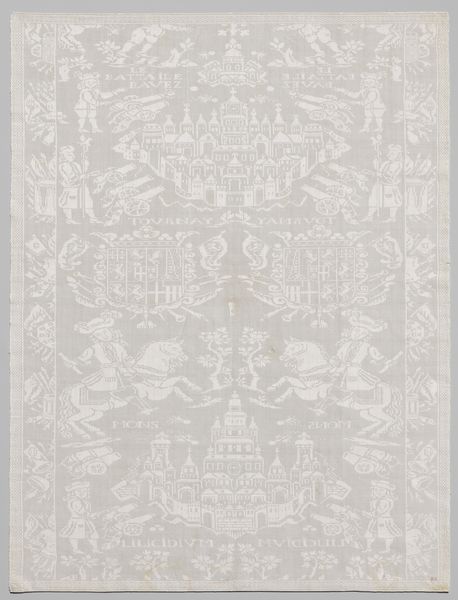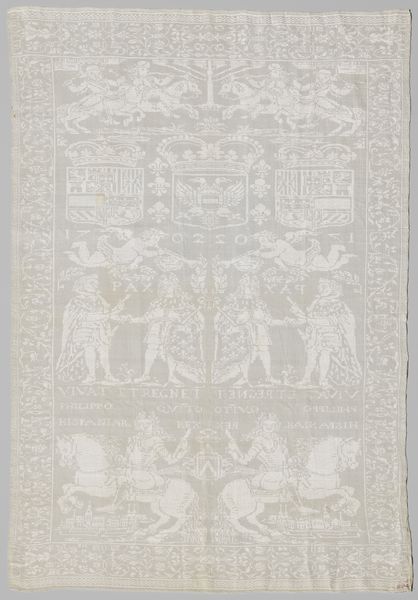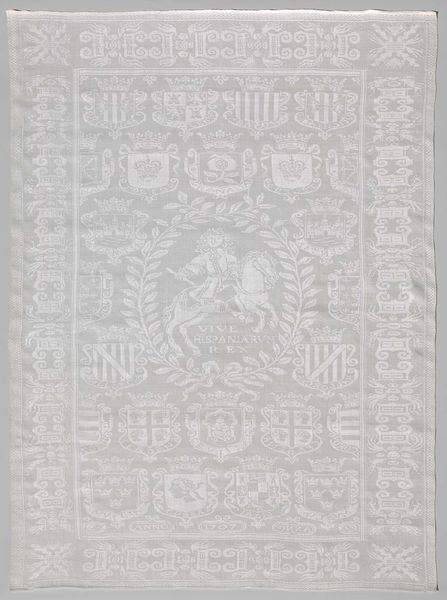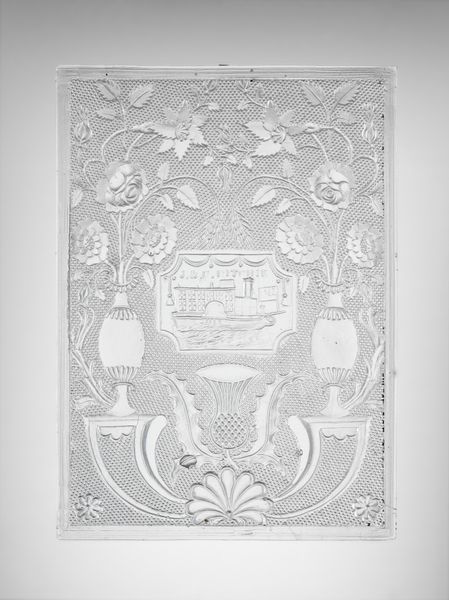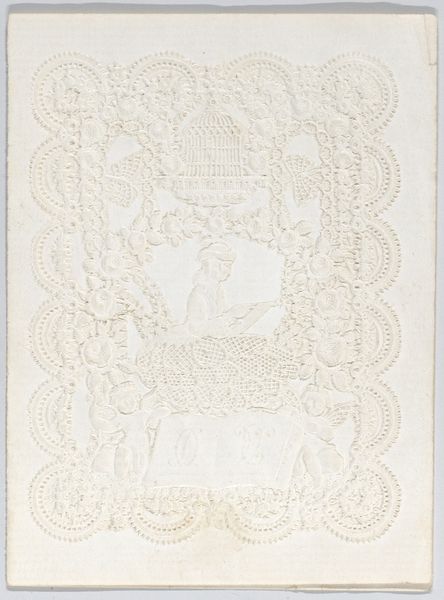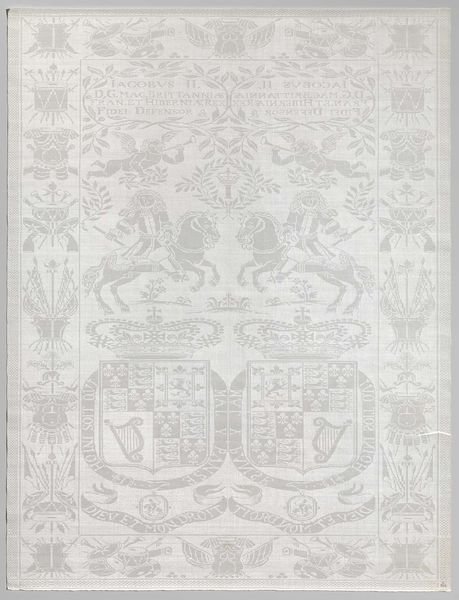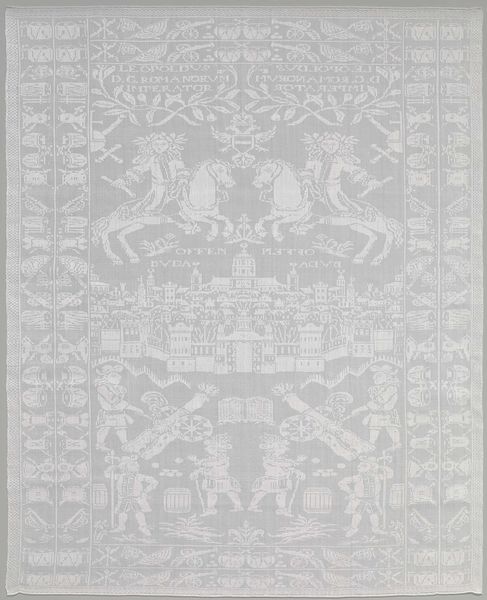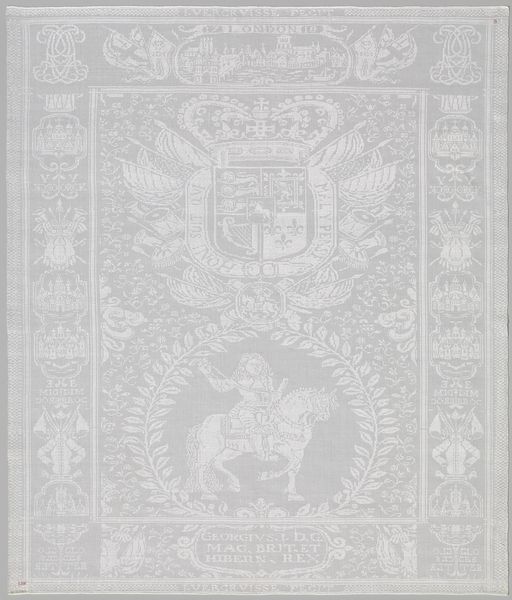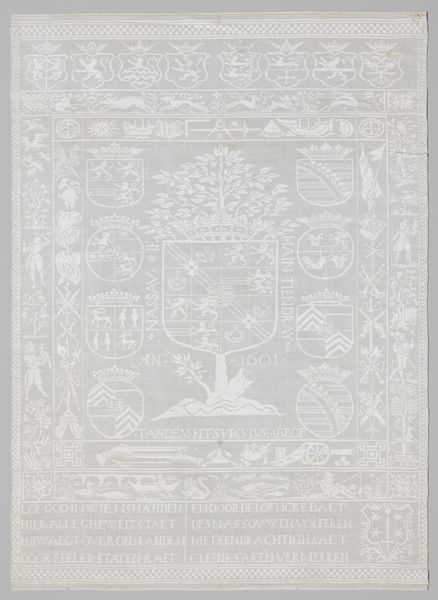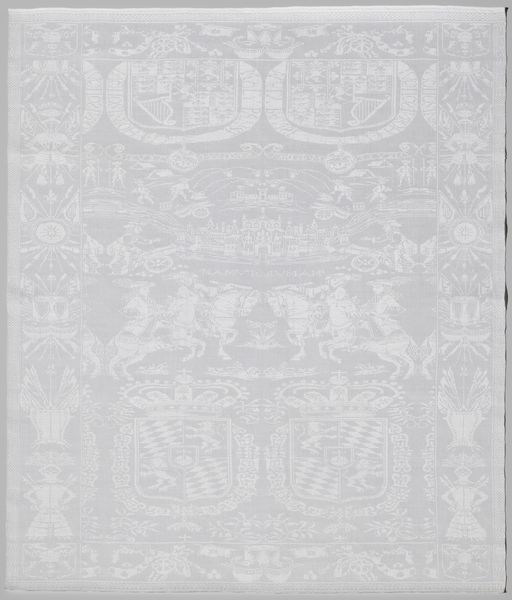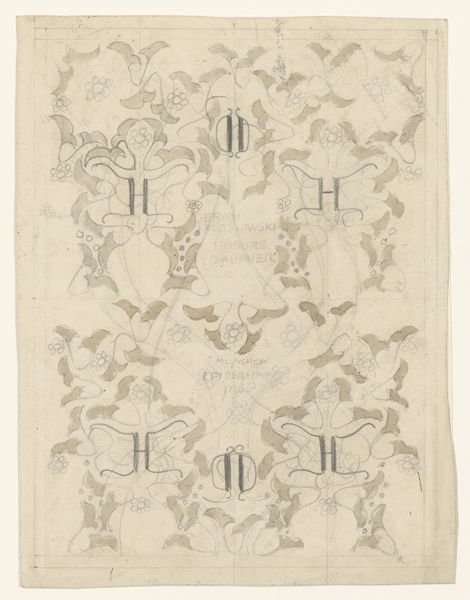
Servet van wit linnendamast met de verovering van Lille door Eugenius van Savoye c. 1708
0:00
0:00
weaving, textile
#
narrative-art
#
baroque
#
weaving
#
textile
#
hand-embroidered
#
pattern design
#
repetitive shape and pattern
#
fabric design
#
repetition of pattern
#
pattern repetition
#
history-painting
#
textile design
#
imprinted textile
#
layered pattern
#
funky pattern
Dimensions: height 82 cm, width 98.5 cm
Copyright: Rijks Museum: Open Domain
Curator: The Rijksmuseum holds this fascinating object, a linen damask napkin dating back to around 1708. It commemorates the conquest of Lille by Prince Eugene of Savoy. Editor: It’s surprisingly austere, isn’t it? For something celebrating such a significant military victory, I would have expected a riot of color, but it's rendered in almost ghostly whites and grays. A really delicate looking piece. Curator: Absolutely. Damask weaving like this was quite elaborate and valued. What stands out to me is how this celebratory piece would have been woven in order to broadcast political events through a luxury item that then circulated among a select and moneyed audience. Editor: What do you make of the imagery? It's not exactly photo-realistic, is it? Those repeated motifs…the horses, cannons, soldiers...they remind me of stylized playing cards. Curator: Indeed. We have a somewhat schematic representation here. Consider the heraldic symbols at the top. Then lower down we see schematized soldiers, each meticulously depicted, positioned near weaponry. The intent isn’t literal accuracy but rather a representation of power, order and the controlled dissemination of specific meanings surrounding a crucial event in the War of the Spanish Succession. Editor: So, the act of portraying a victory on an everyday item – albeit a very luxurious one – almost domesticates the conflict. The cloth flattens and neutralizes the complexities and brutality into consumable image bites? Curator: Exactly! The textile performs a kind of propaganda role but in a domestic sphere. And damask techniques were well suited for clear symbolic transfer due to their fineness. They were very easy to read even at a distance. The repeated, mirrored symmetry amplifies a sense of imposed order and controlled space. Editor: Looking at it again, the overwhelming whiteness takes on new significance. Perhaps it represents purity of cause, or even suggests a sense of divine right backing up the victors. Curator: It speaks volumes doesn't it? This single linen napkin opens into realms of warfare, political theater and the ways images function to form culture. Editor: Fascinating to unpack the different possible contexts from a single visual object. I suppose that’s part of the true artistry of looking!
Comments
No comments
Be the first to comment and join the conversation on the ultimate creative platform.
